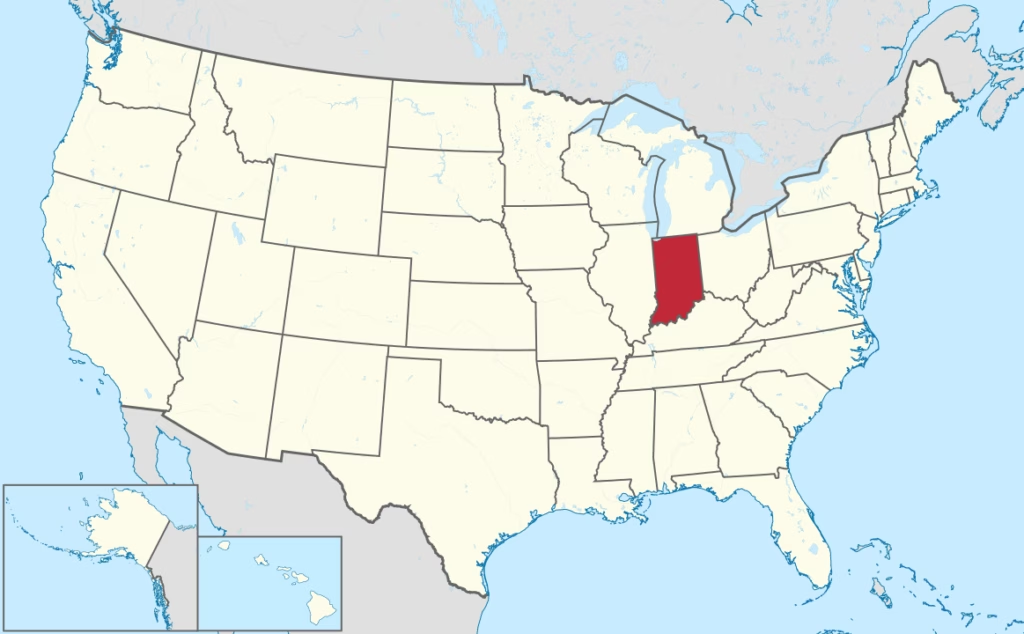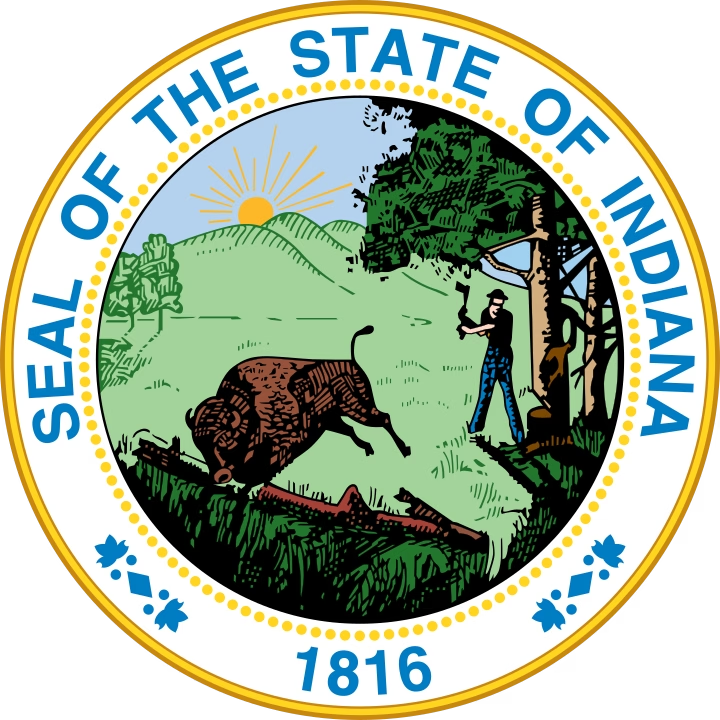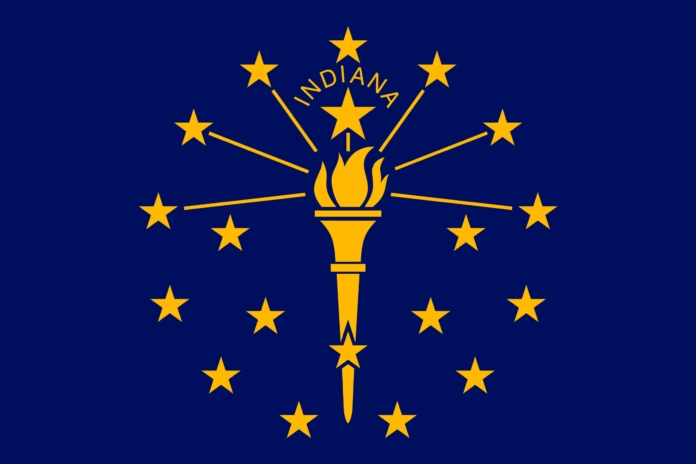Indiana, commonly referred to as The Hoosier State, is a key Midwestern state with a rich history, diverse economy, and cultural heritage. Known for its role in American industry, agriculture, and sports, Indiana offers students a deep look into the development of the United States. This article explores Indiana’s geography, history, economy, demographics, and cultural significance, providing an excellent resource for high school studies.
Geographic Location and Physical Features
Indiana is located in the Midwest region of the United States. It is bordered by Michigan to the north, Ohio to the east, Kentucky to the south (across the Ohio River), and Illinois to the west. It also has shoreline along Lake Michigan, giving it access to the Great Lakes.
The state covers approximately 36,400 square miles, making it the 38th largest U.S. state. Its geography is mostly flat to gently rolling, with fertile farmland dominating much of the landscape. The southern portion of Indiana is hillier and more forested, while the north contains glacial plains.
Key rivers include the Wabash River, which flows through the state and serves as a historic transportation route, and the Ohio River, which forms the southern boundary.
A Brief History of Indiana
Native American Heritage
Before European settlement, Indiana was home to several Native American tribes, including the Miami, Shawnee, and Potawatomi. These tribes lived off the land through hunting, farming, and trade.
European Exploration and Settlement
French explorers arrived in the 17th century, establishing fur trading posts. The British later took control until the region was ceded to the United States after the Revolutionary War. Indiana was part of the Northwest Territory created in 1787.
Statehood
Indiana became the 19th state of the United States on December 11, 1816. Its name literally means “Land of the Indians,” reflecting the region’s original inhabitants.
Civil War and Industrial Growth
Indiana played an important role in the Civil War, supplying soldiers and resources to the Union. After the war, industrialization boomed, especially in steel production and manufacturing, helping to shape Indiana’s economy.
Indiana State Symbols and Facts
- State Nickname: The Hoosier State
- State Capital: Indianapolis
- State Bird: Northern Cardinal
- State Flower: Peony
- State Tree: Tulip Tree
- State Motto: “The Crossroads of America”
These symbols represent Indiana’s culture and geography. The nickname “Hoosier” has debated origins, but it has come to symbolize the state’s residents with pride.
Population and Demographics
Indiana has a population of approximately 6.8 million people. The state’s demographics reflect a mix of urban and rural communities. Most of the population is concentrated around Indianapolis, while other significant cities include Fort Wayne, Evansville, and South Bend.
The population is primarily white (non-Hispanic), but Indiana has growing African American, Hispanic, and Asian communities, particularly in urban areas.
Indianapolis: The Capital and Largest City
Indianapolis, often called “Indy,” is both the capital and largest city in Indiana. Located near the geographic center of the state, Indianapolis is known for its vibrant economy, cultural attractions, and sports heritage.
Indianapolis Highlights
- Indianapolis Motor Speedway: Home of the world-famous Indianapolis 500, one of the largest auto racing events globally.
- Monument Circle: A historic landmark symbolizing Indiana’s role in American history.
- Children’s Museum of Indianapolis: The largest children’s museum in the world.
- White River State Park: Offers green spaces, museums, and cultural venues.
Indianapolis serves as a hub for commerce, logistics, sports, and education in the Midwest.
Economy of Indiana
Agriculture
Indiana has some of the most fertile farmland in the U.S., producing large quantities of corn and soybeans. Other key agricultural products include wheat, hogs, poultry, and dairy products.
Manufacturing and Industry
Indiana is one of the leading manufacturing states in the country. Major industries include automobile production, steel manufacturing, pharmaceuticals, and machinery. The state’s central location and extensive highway network have earned it the nickname “Crossroads of America.”
Energy and Resources
Coal mining and energy production play a role in Indiana’s economy, while renewable energy sources, such as wind power, are expanding.
Education and Higher Learning in Indiana
Indiana’s education system includes numerous public and private schools and several major universities:
- Indiana University Bloomington (IU): Known for research and liberal arts.
- Purdue University: Renowned for engineering and technology programs.
- University of Notre Dame: A private Catholic university famous for academics and athletics.
- Ball State University: Recognized for education and design programs.
These institutions contribute significantly to the state’s workforce development and innovation.
Culture and Arts in Indiana
Indiana’s cultural heritage reflects a mix of Midwestern traditions, Native American history, and immigrant influences. Music, theater, and sports are central to the state’s identity.
Notable Cultural Contributions
- Music: Indiana is the birthplace of Michael Jackson and the Jackson 5, as well as jazz guitarist Wes Montgomery.
- Sports: Known for basketball culture and legendary high school and college teams.
- Festivals: Events like the Indiana State Fair, Indy Jazz Fest, and Covered Bridge Festival celebrate the state’s history and traditions.
Tourism and Natural Attractions
Indiana offers diverse attractions for tourists and nature lovers:
- Indiana Dunes National Park: Located along Lake Michigan, featuring sandy beaches and hiking trails.
- Brown County State Park: Known for scenic views and fall foliage.
- Amish Country: Offers a glimpse into traditional Amish life and craftsmanship.
- Historic sites: Including the George Rogers Clark National Historical Park and Conner Prairie Interactive History Park.
Interesting Facts About Indiana
- The Indianapolis 500 is the largest single-day sporting event in the world.
- Santa Claus, Indiana, receives thousands of letters every year addressed to Santa.
- Indiana is home to more than 100 covered bridges, many of them in Parke County.
- The state has one of the nation’s largest limestone quarries, used in iconic buildings like the Empire State Building.
- The first professional baseball game was played in Fort Wayne in 1871.
Why Study Indiana?
For high school students, Indiana provides insights into U.S. history, geography, and economics. Its role in manufacturing, agriculture, and transportation highlights the interconnectedness of regional economies. Indiana also offers lessons in cultural diversity, sports history, and industrial development.
Conclusion
Indiana, the Hoosier State, embodies the spirit of the American Midwest. With its fertile farmland, industrial strength, cultural contributions, and historic landmarks, Indiana plays a significant role in the story of the United States. From the excitement of the Indianapolis 500 to the peaceful beauty of the Indiana Dunes, the state offers a blend of tradition and innovation that makes it an essential topic for high school students studying U.S. states.
By exploring Indiana’s geography, history, and culture, students gain a deeper understanding of how local and regional factors shape the national identity of the United States.



